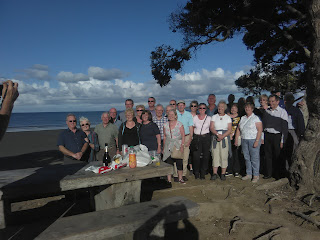Scandinavian Cruise - Day 1 - Dover
North Sea is an arm of the Atlantic Ocean, between the eastern coast of Great Britain and the continent of Europe. The Strait of Dover, with the English Channel, forms the southern link with the Atlantic. The greatest width of the North Sea is 650 km (400 mi), its greatest length 950 km (590 mi), and its area 575,000 sq km (222,000 sq mi). A number of rivers flow into the southern part of the North Sea, namely, the Elbe, Weser, Ems, Rhine (which is joined at its mouth by the Meuse), and Schelde (Escaut) in Europe and the Thames and Humber in Great Britain. The sea reaches its greatest depth off the coast of Norway. The shallow Dogger Bank occupies the south central part of the sea. The tides of the North Sea are very irregular, because two tidal waves enter it, one from the north and one from the south.
Rain and fog occur at all seasons, and the violent north-western storms blowing toward the shoals on the south-eastern coast make navigation dangerous, especially along the coast of the peninsula of Jutland. North Sea fisheries provide support for inhabitants of the surrounding countries. Beginning in the late 1970s, much petroleum was produced from the sea floor. By means of the Nord-Ostsee-Kanal, ships enter the Baltic Sea without making the longer passage north around Jutland.
Dover (England) (ancient Dubris). - A district in Kent, south-eastern England. The district, located on the Strait of Dover and formed in 1974, includes the former municipal boroughs of Deal and Sandwich. The town of Dover is situated at the mouth of the Dour River valley, which breaches the high chalk cliffs that line the coast here. It has an excellent harbour and is the leading passenger port of Great Britain, being nearer the Continent than any other British port. Freight traffic is also important to the port of Dover, but this business faces increasing competition from the trains of the channel tunnel, which can move freight faster than boats can. Dover has small-scale industries producing electronic equipment and paper products.
Overlooking the town from the eastern heights of the chalk cliffs is the large Dover Castle, which was built in the 11th century by William the Conqueror on the site of earlier Roman and Saxon structures. It is a noteworthy example of medieval fortification and includes the nearly intact remains of a Roman lighthouse. In the town are ruins of the Maison Dieu (House of God) founded in the 13th century by the English statesman Hubert de Burgh as a hospice for pilgrims from all lands.


Comments
Post a Comment